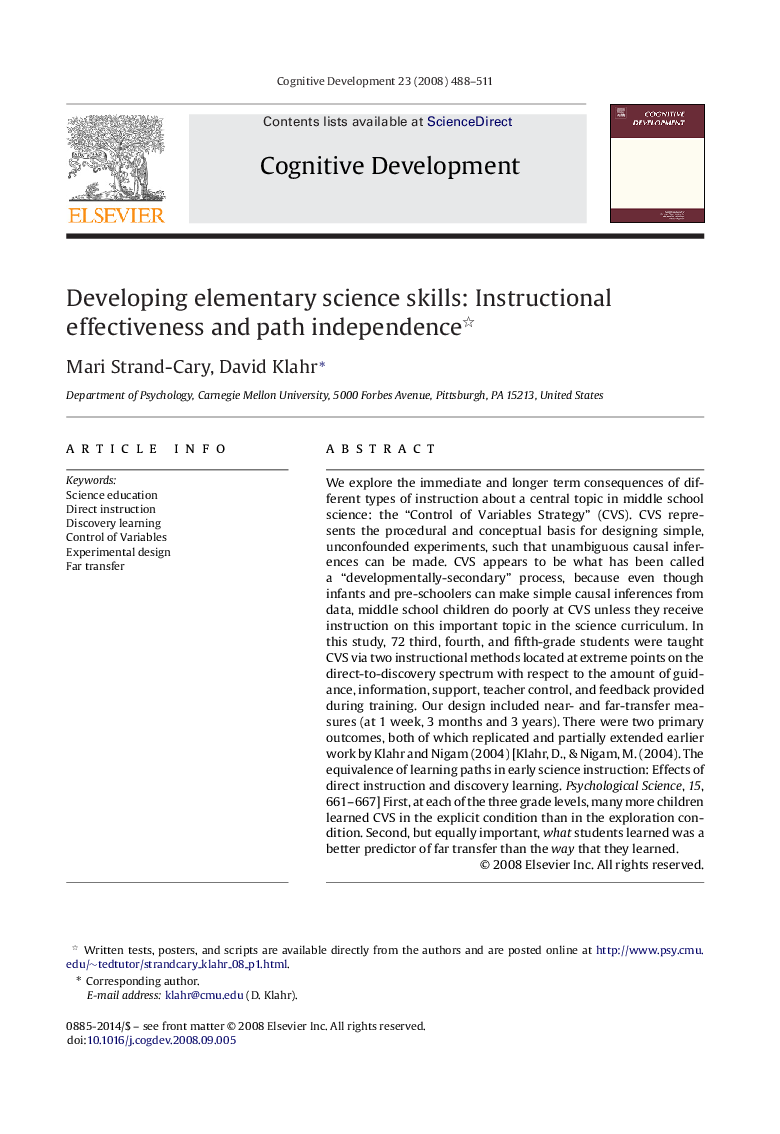| کد مقاله | کد نشریه | سال انتشار | مقاله انگلیسی | نسخه تمام متن |
|---|---|---|---|---|
| 916801 | 918889 | 2008 | 24 صفحه PDF | دانلود رایگان |

We explore the immediate and longer term consequences of different types of instruction about a central topic in middle school science: the “Control of Variables Strategy” (CVS). CVS represents the procedural and conceptual basis for designing simple, unconfounded experiments, such that unambiguous causal inferences can be made. CVS appears to be what has been called a “developmentally-secondary” process, because even though infants and pre-schoolers can make simple causal inferences from data, middle school children do poorly at CVS unless they receive instruction on this important topic in the science curriculum. In this study, 72 third, fourth, and fifth-grade students were taught CVS via two instructional methods located at extreme points on the direct-to-discovery spectrum with respect to the amount of guidance, information, support, teacher control, and feedback provided during training. Our design included near- and far-transfer measures (at 1 week, 3 months and 3 years). There were two primary outcomes, both of which replicated and partially extended earlier work by Klahr and Nigam (2004) [Klahr, D., & Nigam, M. (2004). The equivalence of learning paths in early science instruction: Effects of direct instruction and discovery learning. Psychological Science, 15, 661–667] First, at each of the three grade levels, many more children learned CVS in the explicit condition than in the exploration condition. Second, but equally important, what students learned was a better predictor of far transfer than the way that they learned.
Journal: Cognitive Development - Volume 23, Issue 4, October–December 2008, Pages 488–511